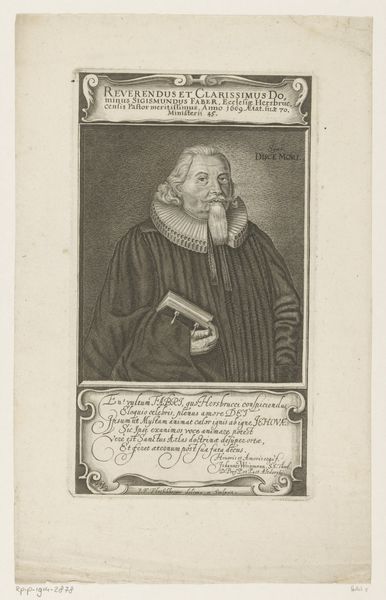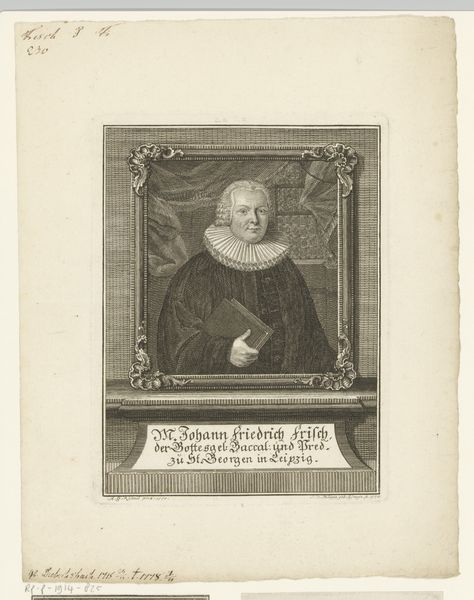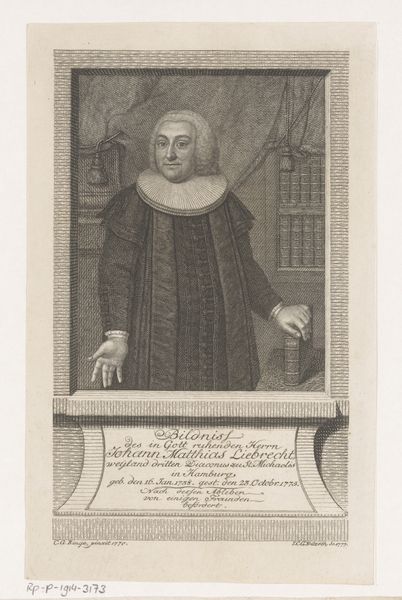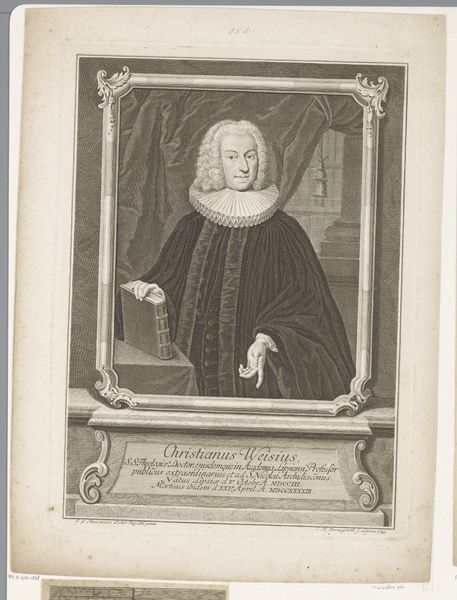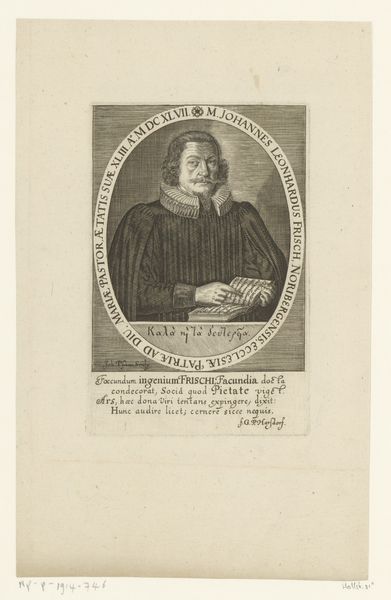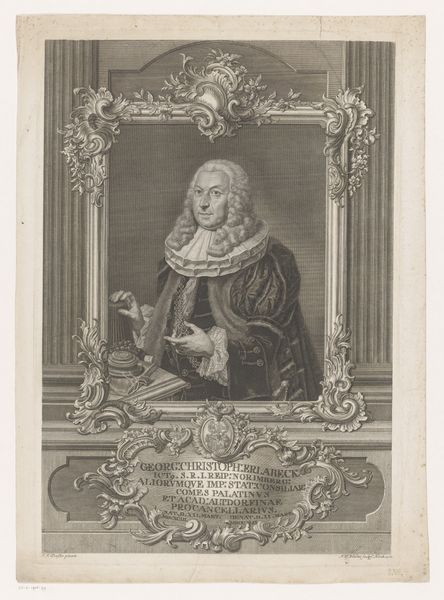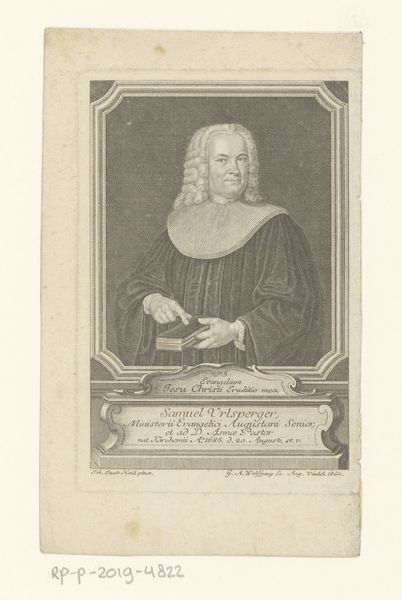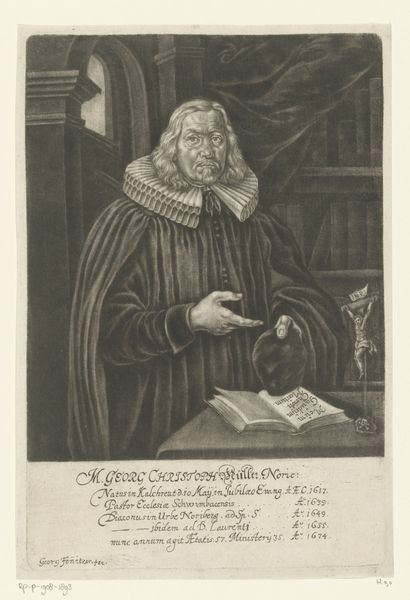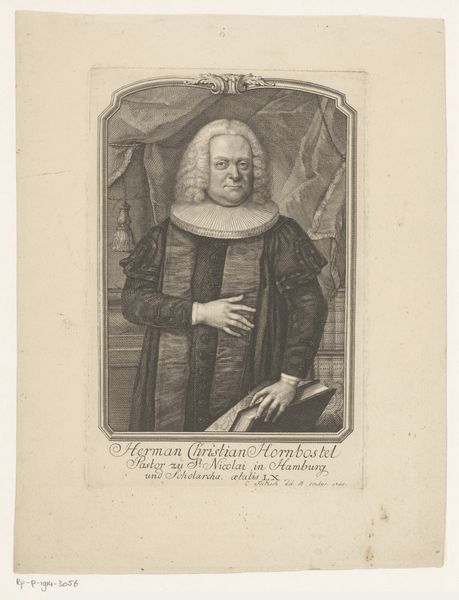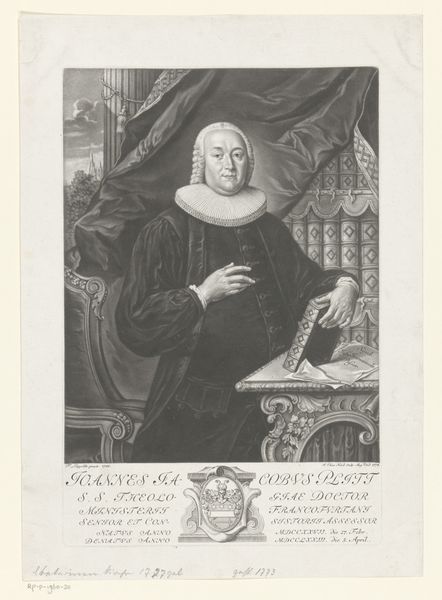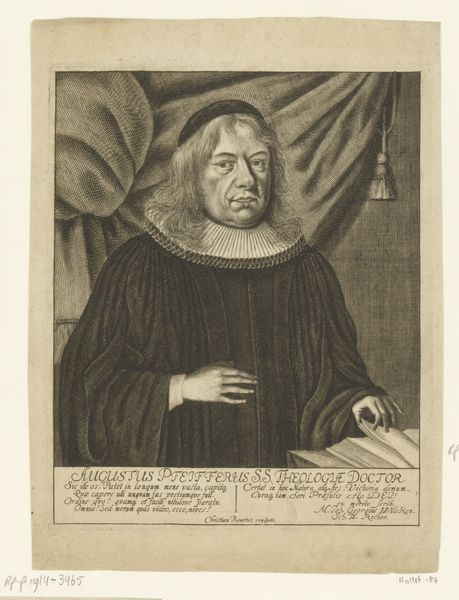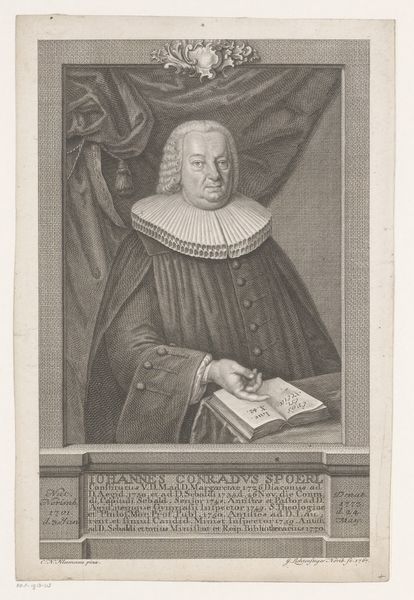
print, engraving
#
baroque
# print
#
book
#
old engraving style
#
caricature
#
history-painting
#
engraving
Dimensions: height 185 mm, width 140 mm
Copyright: Rijks Museum: Open Domain
Editor: This is "Portret van Johann Friedrich Bahrdt," an engraving dating from somewhere between 1728 and 1771, made by Johann Christian Püschel. The subject has this really intense gaze and an enormous frilly collar, but it almost looks like a caricature, despite appearing very formal. What aspects of 18th-century society were at play that might shed light on this seemingly conflicting representation? Curator: That’s a great observation! Consider the rise of the public sphere and printed images. This wasn't simply a portrait; it's a print intended for wider circulation. The almost exaggerated features and formal presentation probably speaks to debates circulating in print culture about religious figures and their place within society. Editor: So, the print’s purpose was to weigh in on contemporary religious debates? Curator: Possibly. Püschel would have made this portrait engraving with particular reception and viewership in mind, which has to be accounted for within the politics of imagery that dictated 18th-century print culture. Think of caricature not as pure satire, but also as a tool to express and solidify specific social and religious perspectives. Does the inscription on the pedestal, detailing Bahrdt's titles, suggest anything about how he wished to be perceived? Editor: It mentions "Doctor" and "Professor," indicating prestige and intellect. So the caricature aspect might be a deliberate strategy to simultaneously highlight and perhaps subtly critique that status? Curator: Exactly! The setting, within what looks like a frame atop a stone pedestal, could reference how imagery circulated from state authorities to endorse figures within public view. How does knowing the image served this particular public function affect your perception of it? Editor: It gives a deeper understanding of the societal currents shaping the work! Thanks for expanding my appreciation for how 18th century imagery could participate in complex socio-political messaging.
Comments
No comments
Be the first to comment and join the conversation on the ultimate creative platform.
